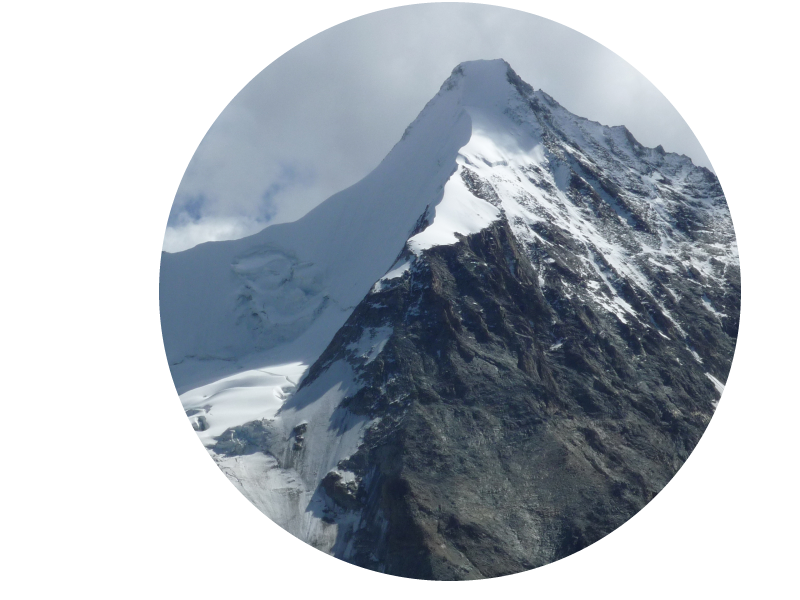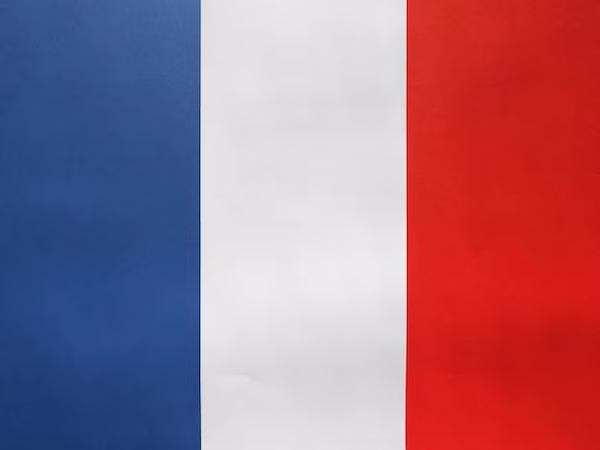Le 20 iéme siècle
Entre 1920 et 1938
Les plus grands problèmes de l’escalade libre dans les Alpes sont résolus.
C’est l’époque des Comici, Cassin, Boccalate, Heckmair, Rebitsch mais aussi les Suisses de l’Androsace (club fondé en 1920). Au cours de ces années, et surtout vers la fin des années 30, l’alpinisme sportif est au faîte de sa gloire.
A peu près à la même époque, de l’autre côté de l’Atlantique, les grimpeurs ouvrent les premières grandes voies avec une technique qui renferme déjà les germes de l’alpinisme sportif de recherche qui, au cours des années 60, apparaîtra comme une alternative à l’alpinisme européen décadent.
Les plus connus de ces alpinistes américains sont Robbins, Frost, Pratt et Chouinard.
Après la guerre
Ce sont les Français qui donnent une impulsion nouvelle à l’alpinisme.
Ils refont toutes les grandes voies ouvertes au cours des années 30, acquérant ainsi une expérience qui les amènera au sommet de l’alpinisme européen et à l’avant-garde de la technique et de l’équipement.
Entre les années 40 et 50, Couzy, Frendo, Lachenal, Rébuffat et Terray reprennent la tradition des Allain, Charlet, Couttet qui, les premiers, avaient adoptés la technique de l’escalade moderne.
Au début des années 50, Bonatti et Ghigo utilisent l’escalade artificielle pour venir à bout de la paroi est du Grand Capucin (voir le film) . Cet exploit raie le mot « impossible » du vocabulaire et ouvre un nouveau terrain d’action.
Au même moment, on assiste à un afflux de nouveaux amateurs de haute montagne, favorisé par le développement des congés payés et des transports, et par la présence de nombreux refuges et bivouacs. L’accroissement rapide du nombre des grimpeurs, ainsi que la mainmise des médias sur l’alpinisme, vont exacerber l’antagonisme qui s’est instauré entre les adeptes du tout artificiel et ceux pour lesquels la méthode classique reste garante d’une certaine éthique.
Tandis que l’alpinisme européen est aux prises avec de nombreuses contradictions et en proie aux plus stériles polémiques, éclate en Amérique, une authentique révolution dans la conception de l’escalade.
Le grimpeur est débarrassé du mythe qui l’entoure et l’individu ramené à sa juste mesure. Seule compte la perfection stylistique, physique et psychique.
Chouinard, Harding, Harlin, Robbins et Salathé sont au nombre des plus célèbres grimpeurs de la nouvelle école américaine.
Presque en même temps, l’alpinisme anglais revient sur le devant de la scène.
Bonington, Brown, Haston et Whillans en sont les représentants les plus en vue dans les années 60 et 70.
Alors que dans les Alpes il n’y a plus guère de « premières » à faire, les alpinistes européens s’intéressent de plus en plus à l’Himalaya et aux sommets de plus de 8000 mètres.
Le premier 8.000 à être gravi est l’Annapurna en 1950, par Maurice Herzog et Louis Lachenal.
l’Everest est atteint par Edmund Hillary et Tensing Norgay en 1953. En 1964, les 14 sommets de 8000 mètres sont gravis.
Et les Suisses dans tout ça ?
Beaucoup de Suisses sont, de par la géographie, des gens de la montagne. Ils y vivent et, bien souvent, ils y peinent pour assurer le quotidien.
La montagne n’alimente pas leurs fantasmes et ne sert pas d’exutoire à quelques malaises sociaux ou psychiques. S’ils y vont, c’est surtout en tant que porteur et guide, pour aider le père à nourrir la famille, qui est souvent nombreuse en ces temps là.
Cependant, des écrits anciens mentionnent le cas d’un moine qui a gravi le mont Pilate en 1387.
Parmis les guides suisses de renom, citons Christian Almer (1826 – 1898), Jakob Anderegg (1826 – 1878), Melchior Anderegg (1828 – 1914), Alexandre Burgener (1845 – 1910), Joseph Knubel (1881 – 1961).
L’alpinisme en tant que fin en soi et non plus en tant que moyen, prendra naissance à Genève.
Plusieurs raisons à cela.
Le Mont-Blanc et Chamonix sont à proximité.
Le Salève est une école de choix pour la « varappe » (le terme varappe vient du nom d’une des premières voies ouvertes sur son versant nord), la ville est riche et les idées y circulent librement et enfin, il y avait De Saussure.
En 1920 se crée l’Androsace, qui réunit l’élite de l’époque.
Ses membres ont pour nom Dittert, Greloz, Rham, Roch et leur chef spirituel est Marullaz. A leur palmarès, des entreprises telles que la face nord du Plan (Roch-Greloz) ou l’envers de Blaitière (Greloz-Marullaz).
Raymond Lambert (1914 – 1997) réussit la première traversée hivernale des aiguilles du Diable et participe à l’expédition suisse du printemps 1952 dans l’Himalaya.
Michel Darbellay réussit la première ascension en solitaire de la face nord de l’Eiger en 1963.
Les Suisses participent également à l’épopée himalayenne. Entre 1939 et 1952, plusieurs expéditions sont organisées regroupant principalement des alpinistes genevois.
En 1956, une expédition conduite par Albert Eggler réussi la deuxième ascension de l’Everest et la première ascension du Lhotse.
En 1960, des alpinistes, dont Michel Vaucher, réalisèrent sous la direction de Max Eiselin la première du Dhaulagiri.
The 20th century
Between 1920 and 1938
The biggest problems of free climbing in the Alps were solved.
This was the era of Comici, Cassin, Boccalate, Heckmair, Rebitsch and also the Swiss of Androsace (a club founded in 1920). During these years, and especially towards the end of the 1930s, sport mountaineering was at the height of its glory.
At around the same time, on the other side of the Atlantic, climbers were opening the first major routes using a technique that already contained the seeds of the research-based sport mountaineering that would emerge in the 1960s as an alternative to decadent European mountaineering.
The best-known of these American mountaineers were Robbins, Frost, Pratt and Chouinard.
the post-war period
It was the French who gave new impetus to mountaineering. They redid all the major routes opened in the 30s, acquiring experience that would take them to the summit of European mountaineering and to the forefront of technique and equipment.
Between the 40s and 50s, Couzy, Frendo, Lachenal, Rébuffat and Terray continued the tradition of Allain, Charlet and Couttet, who had been the first to adopt modern climbing techniques.
In the early 50s, Bonatti and Ghigo used artificial climbing to climb the east face of the Grand Capucin (see film). This feat removed the word « impossible » from the vocabulary and opened up a new field of action.
At the same time, there was an influx of new mountaineering enthusiasts, encouraged by the development of paid holidays and transport, and by the presence of numerous refuges and bivouacs. The rapid increase in the number of climbers, combined with the media’s stranglehold on mountaineering, exacerbated the antagonism that had arisen between the adepts of the all-artificial method and those for whom the traditional method remained the guarantor of a certain ethic.
While European mountaineering was grappling with numerous contradictions and prey to the most sterile polemics, a genuine revolution in the conception of climbing was taking place in America. The climber was stripped of the myth that surrounded him, and the individual was reduced to his true worth. All that mattered was stylistic, physical and psychological perfection.
Chouinard, Harding, Harlin, Robbins and Salathé are among the most famous climbers of the new American school.
Almost at the same time, English mountaineering was back in the spotlight. Bonington, Brown, Haston and Whillans were its most prominent representatives in the 60s and 70s.
While there were hardly any « firsts » left in the Alps, European mountaineers were increasingly interested in the Himalayas and peaks over 8,000 metres.
The first 8,000-metre peak to be climbed was Annapurna in 1950, by Maurice Herzog and Louis Lachenal.
Everest was reached by Edmund Hillary and Tensing Norgay in 1953.
In 1964, all 14 8,000-metre peaks were climbed.
And what about the Swiss ?
By virtue of their geography, many Swiss are mountain people.
They live there and often struggle to get by. The mountains do not fuel their fantasies or serve as an outlet for some social or psychological malaise. If they went there, it was mainly as porters and guides, to help their fathers feed the family, which was often large in those days.
However, ancient writings mention the case of a monk who climbed Mount Pilate in 1387.
Famous Swiss guides include Christian Almer (1826 – 1898), Jakob Anderegg (1826 – 1878), Melchior Anderegg (1828 – 1914), Alexandre Burgener (1845 – 1910) and Joseph Knubel (1881 – 1961).
Mountaineering, as an end in itself rather than a means to an end, was born in Geneva.
There are several reasons for this.
Mont Blanc and Chamonix are close by.
The Salève is a school of choice for rock-climbing (the term « varappe » comes from the name of one of the first routes opened on its northern slopes), the town is rich and ideas circulate freely, and last but not least, there was De Saussure.
In 1920, Androsace was founded, bringing together the elite of the time.
Its members were called Dittert, Greloz, Rham and Roch, and their spiritual leader was Marullaz. Their achievements included such climbs as the north face of Le Plan (Roch-Greloz) and the reverse side of Blaitière (Greloz-Marullaz).
Raymond Lambert (1914 – 1997) made the first winter crossing of the Aiguilles du Diable and took part in the Swiss spring expedition to the Himalayas in 1952.
Michel Darbellay made the first solo ascent of the Eiger North Face (see film) in 1963.
The Swiss also took part in the Himalayan epic. Between 1939 and 1952, several expeditions were organised, mainly by mountaineers from Geneva.
In 1956, an expedition led by Albert Eggler made the second ascent of Everest and the first ascent of Lhotse.
In 1960, climbers including Michel Vaucher, led by Max Eiselin, made the first ascent of Dhaulagiri.



Thanks for some other informative blog. Where else could I get that kind of information written in such a perfect way?
I have a venture that I’m just now operating on,
and I’ve been on the glance out for such info.
Type « climbing history » in Google search.
I love your blog.. very nice colors & theme. Did you design this website yourself or did you
hire someone to do it for you? Plz answer back as I’m looking to create my own blog
and would like to find out where u got this from.
thanks
I used the WordPress Harmony theme, and my site is hosted by Infomaniak.
Keep on writing, great job!
I just want to say I’m all new to blogs and actually loved you’re web site. Probably I’m planning to bookmark your blog . You certainly come with great article content. Regards for sharing your blog site.
Je vous felicite, c est un regale de vous suivrenn1nn1